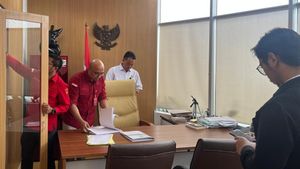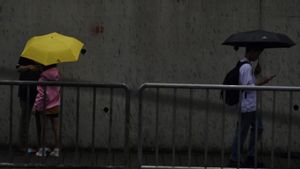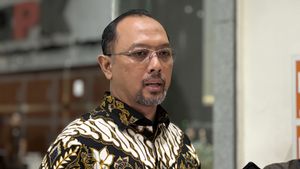JAKARTA - Astronomer Planetarium and Jakarta Observatory Management Unit Jakarta Arts Center Taman Ismail Marzuki Widya Sawitar explained the origin of the term "strawberry supermoon" phenomenon.
Widya revealed the term when holding the "Together Night Picnic" at Ancol Dreamland, North Jakarta, Tuesday, June 14 evening.
Initially, Widya got a question from one of the participants about the term strawberry supermoon, which doesn't look red like a strawberry, but is actually white.
"He said strawberry, why is it white?" that was the question of one of the participants of the picnic that night.
Then, Widya explained that astronomers did not use the term strawberry from the supermoon phenomenon to refer to the super full moon tonight.
Widya said the term strawberry name does exist, but it is not related to the current super full moon.
"We astronomers don't use it. But from culture, yes, it exists. Now, for example, it's the strawberry season there, so it's called the Strawberry Moon. It has nothing to do with shape," said Widya.
The Indonesian Amateur Astronomer equated the definition of strawberry with other terms, such as "blue moon" which is not related to the appearance of a blue color, but because there are two full moons in one Christian month.
"For example, January 1 is full. Later it will be full again on January 30, so the second one is called Blue Moon. So in the same month," said Widya.
Widya also explained the term for another unique phenomenon, namely the blood moon which is not related to blood.
According to Widya, the term blood moon is because it follows the color of the moon which is slightly reddish like copper.
Meanwhile, the Head of the Committee for the Night Picnic with Taman Impian Jaya Ancol Muhammad Raihan said that the strawberry supermoon was an adaptation of a foreign term which indicates the phenomenon of a full moon that is seven percent larger and about 14-15 percent brighter than a regular full moon.
While the word strawberry was taken from the ancient calendar of farmers on the mainland of the Americas.
"They say that the full moon that falls on the second week of June is when they harvest strawberries. That's why they call it the strawberry supermoon," said the astronomy lecturer from the Jakarta Planetarium and Observatory, the Management Unit of the Jakarta Arts Center Taman Ismail Marzuki.
The Night Picnic was an effort to educate and discuss with the public about astronomical phenomena that occur in the world.
Planetarium and Jakarta Observatory Jakarta Arts Center Management Unit Taman Ismail Marzuki collaborated with Taman Impian Jaya Ancol to hold this activity.
"Of course we feel we have a moral responsibility to introduce astronomy to the public, especially the people of Jakarta. And of course every year there are lots of interesting astronomical phenomena for us to introduce to the public," said Raihan.
During the revitalization of Taman Ismail Marzuki (TIM) Cikini Central Jakarta, the Jakarta Planetarium and Observatory (POJ) moved the location of the education to Taman Impian Jaya Ancol, so that people could still learn the terms and phenomena of events in the sky.
There were six telescopes prepared by POJ to facilitate public curiosity that night, one telescope for live streaming on Youtube, two more telescopes that could be used freely by the participants of the Night Picnic at Taman Impian Jaya Ancol.
Three more telescopes were kept in reserve for participants on site in case the number ran out.
Through a telescope, the moon that is visible to the naked eye is small, it will appear 40 to 50 times larger when viewed with a lens.
That night, the moon looked full and large and its surface was clearly visible through a telescope.
The English, Chinese, Japanese, Arabic, and French versions are automatically generated by the AI. So there may still be inaccuracies in translating, please always see Indonesian as our main language. (system supported by DigitalSiber.id)













